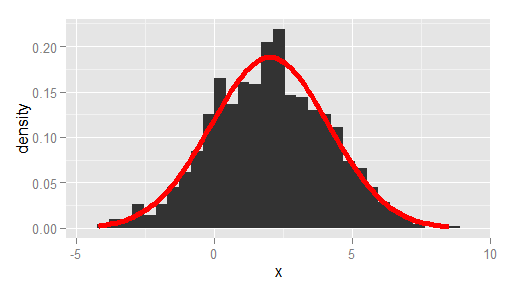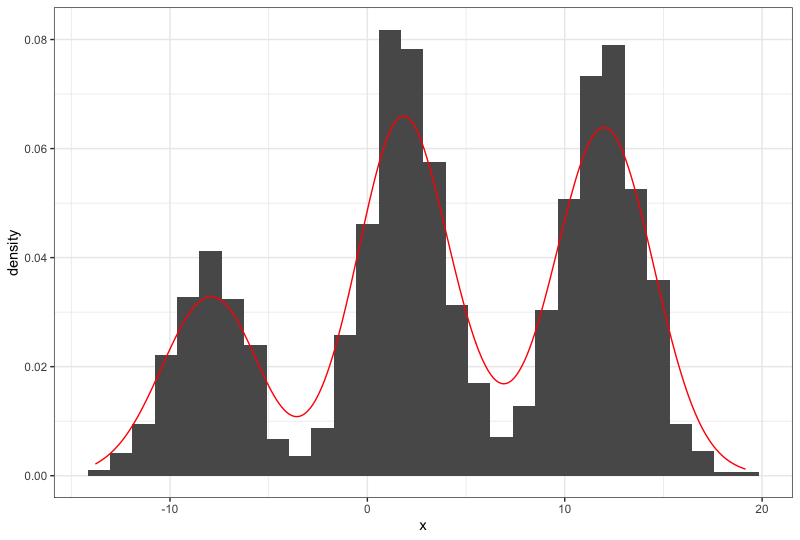I am trying to make a histogram of density values and overlay that with the curve of a density function (not the density estimate).
Using a simple standard normal example, here is some data:
x <- rnorm(1000)
I can do:
q <- qplot( x, geom="histogram")
q + stat_function( fun = dnorm )
but this gives the scale of the histogram in frequencies and not densities. with ..density.. I can get the proper scale on the histogram:
q <- qplot( x,..density.., geom="histogram")
q
But now this gives an error:
q + stat_function( fun = dnorm )
Is there something I am not seeing?
Another question, is there a way to plot the curve of a function, like curve(), but then not as layer?




qplot. This confusesstat_function. The easiest fix would be to writeqplot(x, geom = 'blank') + geom_histogram(aes(y = ..density..)) + stat_function(fun = dnorm). See my detailed answer below – Fleshcurve(dnorm, -4, 4)would beqplot(x = -4:4, stat = 'function', fun = dnorm, geom = 'line')– Flesh